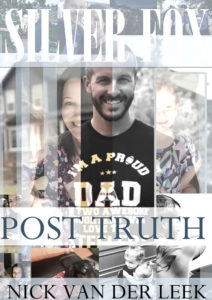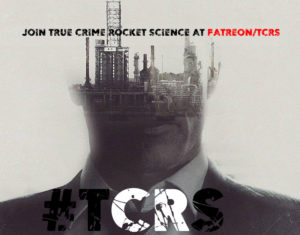FIRESTONE, Colo. (CBS4) – A sudden violent and fatal house explosion in Firestone in April 2017 prompted statewide action related to gas wells by oil & gas officials and Colorado lawmakers including Gov. John Hickenlooper.
April 17, 2017: A home on Twilight Avenue exploded and collapsed, killing two men inside the home. A woman and child were also hurt. Witnesses say a construction crew nearby rushed to the home to help rescue the victims. Those workers reportedly used a forklift to lift the debris before pulling the woman out. The attic of the home next door was also damaged.
April 18, 2017: One day after the explosion, two bodies were pulled from the rubble. The bodies of Mark Martinez and his brother-in-law, Joseph Irwin III, were found in the basement. The woman who was taken to the hospital after the blast was Mountain Range High School science teacher Erin Martinez, Mark’s wife. Investigators confirmed the family was installing a hot water heater when the blast happened.
See Drone4 video captured near the explosion site .
April 27, 2017: Ten days after the explosion, Anadarko Petroleum Corporation announced it would close more than 3,000 vertical wells across northeast Colorado. The home on Twilight Avenue was less than 200 feet away from a well operated by Anadarko. Company officials said the move was made out of an abundance of caution. Colorado oil and gas regulators said testing for signs of natural gas leaks at the explosion site was ongoing.
April 28, 2017: CBS4 airs a report about how the state regulates the distance between new wells and existing homes, but local governments control the distance between planned new homes and existing wells. In Firestone, the requirement is 150 feet. The well next to the home on Twilight Avenue was there more than 20 years before the house was built. State records show the well was shut down in 2016, but was reopened in January 2017. Regulators last inspected it in 2014 and gave it a satisfactory rating. Great Western Oil & Co. also announced it would shut down 61 of its wells, but did not disclose where those wells were located.
May 2, 2017: The Frederick-Firestone Fire Protection District unveils the cause of the explosion was a “fugitive gas” — an unrefined, non-odorized gas — that leaked underground from a severed and uncapped flowline connected to a gas well near the home.
Hickenlooper subsequently issued an order for inspection of wells across Colorado. The order stated flowlines within 1,000 feet of occupied buildings be inspected within 30 days and be tested for integrity within 60 days. The Colorado Oil & Gas Conservation Commission also responded to the findings. They called the explosion highly unusual and unprecedented, and reassured the public the proper steps would be taken to help keep this from happening again. Questions remained about whether the line was ever disconnected from the well or who cut the line.
May 3, 2017: Hickenlooper held a news conference reacting to the home explosion’s cause. He called it a “tragedy of immense intensity.” He reassured residents that their homes that are near flowlines are safe. He said there will be discussion whether officials shouldn’t have some sort of statewide regulations around “no build zones.”
May 5, 2017: Two Colorado House Democrats proposed a bill to force energy drillers to supply locations of all of their gas lines. It faced long odds of passing with only days left in the state legislative session with other must-finish work for lawmakers.
May 9, 2017: Colorado Republican lawmakers blocked a proposal to require oil and gas producers to supply locations of all of their gas lines, using a late-night filibuster to force the bill to die. Hickenlooper said well maps might be better kept by county and local authorities.
May 10, 2017: CBS4’s Rick Sallinger toured Weld County with state regulators who were looking for flowline leaks. One inspector reassured other homeowners about living near oil and gas production, saying he lives near such production, too.
May 16, 2017: Community members in Firestone gathered to honor Mark Martinez, who served as a volunteer softball coach. His daughter was surrounded by friends and family as his jersey was retired at the Firestone Sports Complex. Family members provided an update on Erin Martinez’s condition, saying she made through surgery and was fighting hard to survive.
May 16, 2017: A family who lives near the explosion site in Firestone filed a lawsuit against builders, developers and natural gas producers and controllers of a well that contributed to the April deadly home explosion. The Baum family said companies like Anadarko and Noble Energy, who owned the well prior to Anadarko, failed to confirm the well was safe after it was abandoned.
May 17, 2017: Anadarko announced it would permanently disconnect all 1-inch flow lines from vertical wells. Officials also pledged to supply methane-detecting equipment for residents in the neighborhood.
May 23, 2017: With the deadline set by the governor approaching, few energy companies have reported results of state-ordered inspections of oil and gas pipelines, according to the Colorado Oil and Gas Conservation Commission. COGCC Director Matt Lepore warned the state could order operators to shut down wells connected to pipelines.
May 24, 2017: Anadarko Petroleum Corporation announced it would permanently shut down the well next to the home that exploded as well as two others in the neighborhood. Anadarko officials said they believe the three wells are safe but that they would shut them down because of “special circumstances and sensitivity surrounding this equipment.”
June 2, 2017: Sallinger accompanied a Fort Collins company that detects methane leaks. The company, Red Hen Systems, uses a van that looks like something out of Ghostbusters, but what it does can save lives. Phase 1 of the inspections was completed this week and concentrated on flow lines within 1,000 feet of occupied buildings. Phase 2, to be completed in late June, involves pressure testing to make sure no gas is escaping.
A Year After The Deadly Firestone Explosion, Neighbors’ Emotions Are Mixed
Anadarko agrees to settlement with families involved in deadly Firestone explosion – May 23, 2018
“Although the (National Transportation Safety Board’s) ongoing investigation limits the company’s ability to discuss the event, it is clear that Mark Martinez and Joey Irwin were innocent victims in the explosion,” according to the news release. “Neither they nor Erin Martinez bear any responsibility or fault for what occurred.
“The people of Anadarko express their deepest condolences to both families, and to all affected families, friends and communities.”
Details of the settlement weren’t immediately available.
Earlier in the day, the company announced it demolished the house were the deadly explosion occurred.
The Daily Times-Call reported Anadarko had purchased the property at the site of the explosion that killed two people, injured a third and destroyed a house. Anadarko spokeswoman Jennifer Brice says the house was bought as part of a settlement agreement following the blast. The company says it is working with city officials and others to determine the best use of the property.
Uneasy quiet in Firestone one year after fatal gas explosion
The April 17, 2017, incident has set off a storm of its own, inciting activist passion, industry concern and a sweeping set of new regulations. For the first time, it seemed, the dire predictions of anti-fracking activists had come to terrible fruition: Innocent men had been killed, victims of the unrelenting progress of oil and gas development amid a continually expanding population.
But here on Twilight Avenue, things are quiet.
Kids are still playing in the street. Residents still walk their dogs and water their lawns. It still looks like a lovely suburban neighborhood where one could buy a dream home.For Hoylman, that dream was punctured by the death of two of her neighbors.
“I thought this was going to be my last home,” she said. “I was going to retire here. But it didn’t quite work out that way.”
Initial reports revealed that a line from a nearby well had been cut ahead of construction of Oak Meadows subdivision. The line, though in disuse, had not been disconnected from the well, owned by Anadarko Petroleum Corporation. Gas leaked into the basement of 6312 through a French drain and sump pit.
A more comprehensive investigation, led by the National Transportation Safety Board, is still ongoing. Spokesperson Keith Holloway said such cases typically take 12 to 18 months, meaning answers could be as far away as October, if not farther.
Debris from the incident remained for months. “You’d see a shirt, a little pink sweater,” Hoylman said. “Their sofa made it, but nothing else.”
At first, the neighborhood was brought close together by mutual concern and a need for answers. Anadarko held a series of meetings closed to anyone but Oak Meadows homeowners. But when the meetings stopped and the debris was cleared away, the temporary sense of closeness dissipated.
The family in the partially-burnt 6310 moved away; Anadarko bought their house in February for $402,600, property records show — part of a settlement, the company said. Next steps for the site are still being determined in partnership with the homeowners association, according to an Anadarko spokesperson.
Accident or inevitability?
The story of Firestone, of what happened on that day, is different depending on whom you ask. To oil and gas companies and those who regulate them, the explosion was a freak accident, a tragic event brought about by a set of circumstances not likely to be repeated.
To the fervent critics of the fossil fuel business, Firestone is one of many such incidents waiting to occur, inevitably, when industry intersects suburban sprawl.
“We’ve had 14 explosions since Firestone throughout Colorado,” said Sara Loflin, executive director of the nonprofit advocacy group League of Oil and Gas Impacted Coloradans (LOGIC). “And yet you have oil and gas continuing to insist on bringing these large-scale industrial sites closer and closer to neighborhoods and continuing to insist that they’re safe.”
The Denver Post reported in December that there had been 12 oil and gas-related fires and explosions in the eight months following the Firestone fatalities, including a May 25 blast in Meadthat left one worker dead and three others injured.
Said Loflin: “It’s hard to insist they’re safe when we keep hearing about accidents (and) explosions.”Colorado’s regulations are the toughest in the country, local oil and gas executives and regulators insist. They got tougher after the explosion: More than a dozen new rules pertaining to flow lines — the equipment severed but still connected to an active well in the Firestone incident — were introduced by the Colorado Oil & Gas Commission in February.
The Firestone Effect
The COGCC so far has not started disciplinary measures against Anadarko. The agency typically has one year from the date of the accident to begin an enforcement action, but Anadarko waived that condition through a tolling agreement.
COGCC spokesperson Todd Hartman said he did not know when that process would start.
“There are no words” to describe the feeling at Anadarko offices the day of the explosion, Brice said. “We think about it daily, especially those who live in and around Firestone. We also recognize that pales to what the families and surrounding community endured.”
In the end, the family members declined to speak openly with the Times-Call and Camera, out of fear of jeopardizing ongoing negotiations with Anadarko.
“I can’t even imagine” how Erin’s life has changed, Hoylman said of her former neighbor. “It was like everything was taken away.”
Hoylman’s life has changed, too. She has for the first time become involved in activism, calling and writing local and state elected officials, even penning a letter to Hickenlooper that has (so far) gone unanswered.
She is plagued by anxiety whenever she encounters signs of drilling activity — a frequent site in and around Firestone. “When I go for a run, (when) I go riding, there’s wells. I go on the highway to go to work, there’s wells. I see them and I cry,” she said.
Ideally, she would move away: “Somewhere there’s no fracking,” she said. A handful of homes in the neighborhood have sold since the explosion, for decent profits. But Hoylman hasn’t been able to bring herself to list the house she purchased in June 2015 for $390,000.
The thought of facing prospective buyers, of confronting them with the history of the neighborhood, distresses her.
How do you tell what happened here? she asked.


































































































Recent Comments